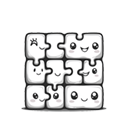Activity
Similar Activities
Nature-Inspired Drawing Activity
Children’s Age: 8–9 years
Activity Duration: 10 – 25 minutes
An outdoor activity where children draw natural elements to foster creativity and ecological awareness.
Activity Duration: 10 – 25 minutes
Animal Feast Adventure: A Whimsical Feeding Frenzy
Children’s Age: 5–8 years
Activity Duration: 10 – 25 minutes
An interactive activity where children feed toy animals with pretend food, promoting communication skills and adaptive development.
Activity Duration: 10 – 25 minutes
Cultural Collage Creations: Exploring World Wonders Together
Children’s Age: 7–9 years
Activity Duration: 10 – 25 minutes
Let's embark on a creative journey with "Cultural Collage Creations"! This educational craft project invites children to explore diverse cultures through art. Gather supplies and c…
Activity Duration: 10 – 25 minutes
Whispers of Nature Rhythms: Exploring Beats and Patterns
Children’s Age: 3–7 years
Activity Duration: 10 – 30 minutes
Let's explore "Nature Rhythms" together! We will listen to nature's beats and patterns using rocks, sticks, leaves, and pinecones. Find a safe outdoor spot, gather natural material…
Activity Duration: 10 – 30 minutes
Enchanted Forest: The Nature Scavenger Hunt
Children’s Age: 2–6 years
Activity Duration: 15 minutes
Let's go on a Nature Scavenger Hunt to explore and enjoy nature! You'll need a basket, a list of items to find, paper, markers, and maybe some magnifying glasses. Choose a safe out…
Activity Duration: 15 minutes
Enchanted Nature Walk: The Sensory Adventure
Children’s Age: 1–1.5 years
Activity Duration: 10 minutes
Engage your 12 to 18-month-old in the Sensory Nature Walk to boost their language, sensory, and social skills through outdoor exploration. Prepare for the adventure by dressing you…
Activity Duration: 10 minutes
Enchanted Sensory Nature Walk for Babies (0-6 months)
Children’s Age: 0 – 6 months
Activity Duration: 5 – 10 minutes
Explore the Sensory Nature Walk for Babies (0-6 months) to introduce your little one to the wonders of the natural world. This activity supports cognitive, social-emotional, and ad…
Activity Duration: 5 – 10 minutes
Enchanted Sensory Garden Exploration for Infants
Children’s Age: 0 – 3 months
Activity Duration: 10 minutes
Explore the Sensory Garden with your little one aged 0 to 3 months for a delightful outdoor sensory experience. Enhance communication skills and adaptive development as your infant…
Activity Duration: 10 minutes
Garden Sensory Exploration: Nature's Textured Adventure
Children’s Age: 6 months – 1 year
Activity Duration: 5 – 10 minutes
Encourage your child's sensory and motor development with an outdoor garden exploration activity. Lay out a blanket in a safe spot, gather natural items like leaves and rocks, and …
Activity Duration: 5 – 10 minutes
Enchanted Melodies: Musical Rhyme Relay Adventure
Children’s Age: 3–4 years
Activity Duration: 15 – 20 minutes
Engage children aged 36 to 48 months in the Musical Rhyme Relay, a fun activity promoting adaptive development and communication skills. Set up a relay course with cones, musical i…
Activity Duration: 15 – 20 minutes
Enchanted Nature Hunt: Sensory Exploration Adventure
Children’s Age: 1.5–2 years
Activity Duration: 5 minutes
The Sensory Nature Hunt activity is tailored for children aged 18 to 24 months, offering an engaging outdoor sensory experience. Through exploring nature using touch, sight, and so…
Activity Duration: 5 minutes

























